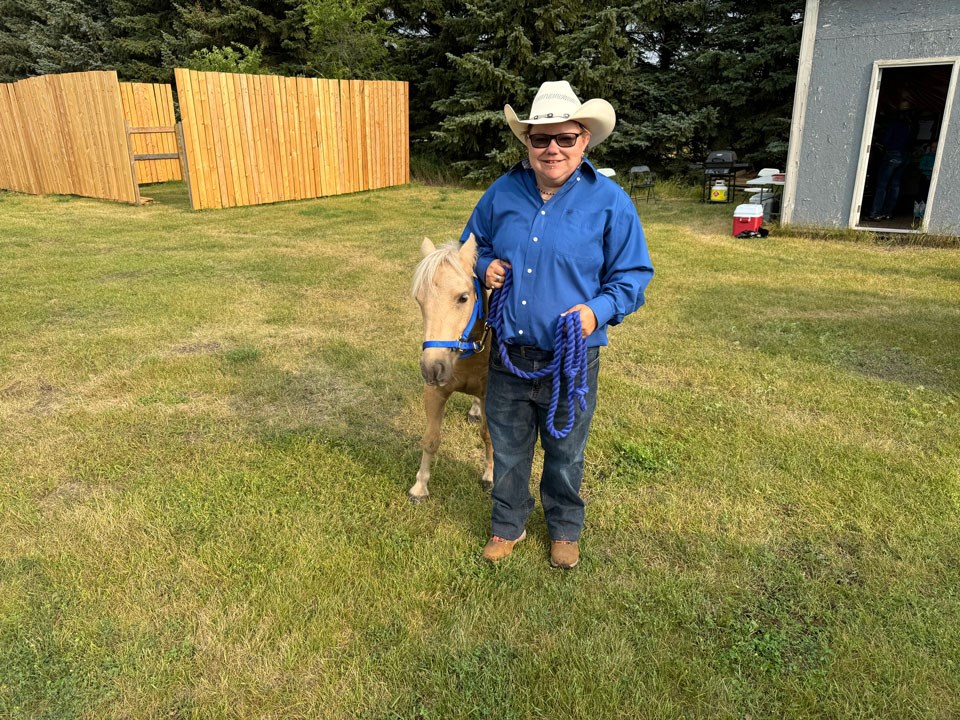ARCOLA — When Krystle Zoer woke up one chilly winter morning in February with a headache, she thought if she took over-the-counter pain medication, the headache would go away. The headache continued and the following day it was worse.
Zoer has an eye condition called narrow-angle closed glaucoma. If she has a persistent headache for more than 24 hours, she must go to her optometrist to make sure the pressure in her eyes is still in the normal range.
She called Dr. Sliva the following morning and her doctor had her come in right away. Dr. Sliva is the one who first noticed her eye condition 10 years earlier.
A thorough exam showed Zoer's eye pressure was normal and not the source of her head pain. Zoer was relieved it wasn't her eyes, but her pain persisted and worsened.
“I have a lot of health issues, but headaches and migraines has never been much of a problem for me,” said Zoer. “The over-the-counter pain medication was not doing a thing to get rid of the pain.”
Zoer said she was lucky and was able to get in to see a doctor quickly and he called it a migraine. She hoped the prescribed medication would relieve her worsening pain.
The pain was above her right eye, and it was a stacking or stabbing pain. She described experiencing a sharp, intense pain in her head that persisted and changed in intensity. Zoer felt best when she was lying down with a cool cloth on her head.
She felt exhausted and fatigued, with no energy to do a thing. “I lay on the couch most of the day,” said Zoer. “When I would get up, the pain increased from a six to an eight. I hated the way this was making me feel and I wanted to crawl in a hole and die.”
After three months and multiple trips to the Arcola emergency department, the pain was increasing, and no medication was easing the pain. It had now increased to nine and a half. She was prescribed more migraine medication, but no longer believed migraines were the problem.
Two CT scans over three months showed no abnormalities, so the pain was treated as a migraine. The medications were preventative drugs and none of them worked.
She finally was able to see a neurologist and he, too, called it a migraine. Zoer told him that she felt it was something else, as she had no other signs of a migraine, but he prescribed her two medications that she was to take for four weeks for migraines and he would call her after the four weeks. But after one week, the pain got worse.
More trips were made to the Arcola ER and still nothing helped. The neurologist called her and said there was nothing more he could do. “I felt like he did not care,” said Zoer. “I was back at square one and the pain was still there.”
Her family doctor managed to get her into another neurologist, and an MRI was ordered. The pain had been going on for four months. The MRI was scheduled right away and an appointment followed with the neurologist.
“He sat right in front of me and asked exactly where the pain was, so I told him,” Zoer said. “He really listened to me, and he knew how many times I had been to the ER, as he told me that he had read my file.”
It was then that he told Zoer that she had an ice pick headache, and that hers was unusual, as they normally come and go. He also told her that all the medication she had been prescribed would not work as they were all for migraines, and mostly preventative drugs. Zoer felt she was getting somewhere now.
In the meantime, she has seen her eye specialist and found out that her eye condition has gotten worse and will need surgery, but it has nothing to do with the headache. She was told her narrow-angle closed glaucoma is severe and eye surgery is necessary.
Zoer has been on the new medication for three weeks. After the first week, the pain went down to seven, and now the pain has decreased to four. Each week, the medication is increased, and is working.
“I feel better but still get tired,” she said. “I try to keep going and do things, but it sure is great to not have so much pain anymore.”
Zoer said, according to her neurologist, there is no scientific reason for ice pick headaches, and there is no cure for them, only pain management. They may go away and not return for months or years, or they may stay for several months. The intensity of the pain varies for people.
Zoer feels that because she kept pushing and asking for answers, she got to see the right doctors. Although the pain is not gone, it is much less than it was before. She hopes one day that she can say the pain is gone.




